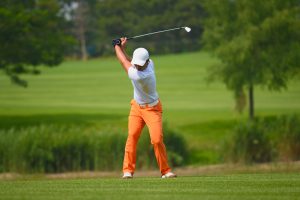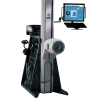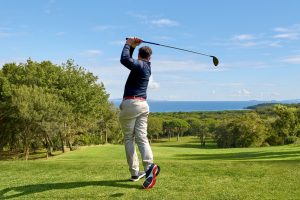
Drive Clinic Revenue Fore-ward With Golf Injury Programs
Practice ManagementA bad swing doesn’t just mean a bad shot. A poorly trained swing can lead to injury. When you consider the number of swings that a golfer will take on the practice range or the course, overuse injuries can occur in a short period of time.
Golf is and has been a growing sport across many generations, and only looks to grow further. In fact, nearly 24 million people played on a golf course in 20161. And, with the explosion of off-course golf driving ranges and simulators, that number has skyrocketed even further! With a growing number of participants, the number of golf injuries is also on the rise.
But, many cities lack a rehab or therapy clinic offering specialized programs for golf injuries. Your clinic has a major opportunity here!
Imagine that you’re a golfer. You’ve been playing for years, and one day, you get hurt. Wouldn’t you much rather go to a clinic that offers a rehab program specifically for golfers, than any other clinic? It’s a no brainer. And, if you have a good experience at that clinic, you’ll probably recommend it to your fellow golfers.
Expanding your services can attract new patients and boost clinic revenue. Also, getting any associated certifications is a great way to invest in your own and your staff’s professional development.
Titleist Performance Institute (TPI) Certification for golf injuries
One such program with name recognition and evidence-based science backing is the Titleist Performance Institute (TPI) certification program2. This certification program started in 2003 and has grown to include five unique fields of study designed for golf instructors, fitness experts, and medical professionals.
Over 19,000 people world-wide have been certified. But I bet that you will have a difficult time finding therapy clinics in your area that offer this program. For example, using the TPI search system, you’ll find only one TPI medical professional located in the Lexington, Kentucky area. Even for a large city like Chicago, fewer than 15 medical professionals offer this program.
The TPI program incorporates a variety of tests that assess range of motion, flexibility, strength, and power. Clinicians start treatment with an initial screening to identify problems. Then, they use the TPI program exercises and additional modalities or treatments at their disposal.
You, as the therapist, are ideally suited to perform these evaluations and treatments. With a TPI certification, you’ll be able to use your new skills along with your previous experience to create the best treatment and fitness plan for your patient.
How golf injuries occur
To a non-golfer, the golf swing can look simple and natural. However, when you break down the mechanics of an efficient, safe, and powerful golf swing, you will see that many parts are moving in unison and have to do so at the perfect time in order to produce a positive result.
A bad swing doesn’t just mean a bad shot. A poorly trained swing can lead to injury. When you consider the number of swings that a golfer will take on the practice range or the course, overuse injuries can occur in a short period of time.
Typically, golfers will experience lower back injuries, shoulder rotator cuff injuries, “golfer’s elbow,” as well as other various lower extremity injuries3. Each condition is one that you, as a therapist, are more than capable of treating, given your knowledge of anatomy and biomechanics.
Golf simulation with PrimusRS
Another effective training and rehab option for golf injuries is BTE’s PrimusRS. Clinics that have a PrimusRS can simulate various parts of the golf swing. For instance, if the golfer has weakness in the lower extremity or spine, the PrimusRS can help train those muscles. Using a specialized setup of the cable system, the golfer can stand at address with straps attached to the legs. The tension on the cable forces the golfer to work on contracting the necessary muscles needed to maintain that position. This is an excellent exercise for strength and proprioception, both of which are needed in the golf swing.
For those recovering from upper extremity conditions, a different setup can allow the clinician to address shoulder mobility in the take away or acceleration phase of the swing. A clinician will be able to test or train for strength, range of motion, power, and velocity and be able to document improvements in each. In conjunction with a certification such as the TPI, the PrimusRS will only further set your clinic apart in offering golf injury programs!
In today’s competitive therapy market, consumers of therapy services are looking for clinics that stand out from the crowd. Injured golfers, and athletes of any sport with passion for a game, will be drawn to a clinic that specializes in their sport. Altogether, offering a specific program for golf injuries can help you reach new patients and create a new stream of clinic revenue.
Jeffrey Johnson, MA, ATC
Clinical Specialist
BTE
References
- Stachura, M. 2017. The NGF’s annual gold participation report uncovers favorable trends for the game’s future. Golf Digest. https://www.golfdigest.com/story/the-ngf-annual-golf-participation-report-uncovers-favorable-trends-for-the-games-future
- TPI Certification. Titleist. http://www.mytpi.com/certification
- McHardy, A. 2005. Golf and upper limb injuries: a summary and review of the literature. Chiropractic & Osteopathy. https://pubmed.ncbi.nlm.nih.gov/15967021/





